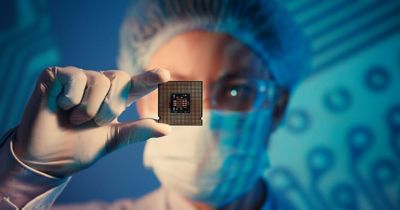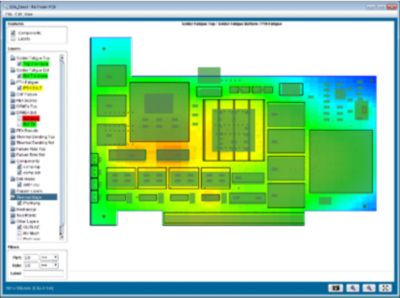-
-
学生向け無料ソフトウェアにアクセス
Ansysは次世代の技術者を支援します
学生は、世界クラスのシミュレーションソフトウェアに無料でアクセスできます。
-
今すぐAnsysに接続!
未来をデザインする
Ansysに接続して、シミュレーションが次のブレークスルーにどのように貢献できるかを確認してください。
国および地域
無料トライアル
製品およびサービス
リソースとトレーニング
当社について
Back
製品およびサービス
ANSYS BLOG
February 16, 2022
Mitigating Electronics Reliability Concerns During the Global Parts Shortage Crisis
The global parts shortage crisis has led to major disruptions to OEMs in the automotive, consumer electronics, and healthcare industries. To maintain production, many companies have been forced to rely on brokers to source the required parts, generating uncertainty in the quality of parts received. Additionally, some companies have had no choice but to replace previously used components with alternate parts due to supply chain shortages.
Swapping components or suppliers may pose serious reliability concerns, especially in high-reliability applications such as those in the medical or aerospace industries. Replacing a component in a high-reliability application may even cause the product to lose certification and fall out of compliance unless reliability can be proven with the swapped component. Consequences include production stoppages and assembly line shutdowns.
Register for our on-demand webinar to learn how you can mitigate these effects.
Let’s discuss how reliability physics simulations and physical component characterization can lead to confident and quick decisions regarding component swapping reliability.

Reliability Physics Based Qualification Approaches to Component Swaps
Component swaps may involve a simple “like-for-like” swap without redesign. In other cases, a component shortage might warrant a larger design change in the printed circuit board assembly (PCBA), including the reorganization of passives on the board or more complex redesigns. The level of qualification needed depends not only on how much redesign was involved, but also whether this calls for requalification due to compliance requirements for the specific industry or application. Reliability physics approaches can target all of these scenarios.
Reliability physics analysis (RPA) or physics of failure (PoF) embraces reliability as an integral part of the design process basing reliability assessments on failure mechanism. This cause-and-effect analysis is driven by design, geometry, material, and environment, providing engineers with valuable and actionable insight. RPA offers three routes to shorten the reliability qualification process faced by OEMs forced to swap components or suppliers during this tumultuous parts shortage.

Figure 1: Reliability physics tool, Ansys Sherlock, tests a printed circuit board for temperature cycling reliability risks.
1. Accelerated Life Testing (ALT)
ALT subjects assemblies to extreme conditions, beyond their normal operating environment, to identify the likely failure modes and failure mechanisms. Then, once a time to failure (TTF) is experimentally determined at the extreme condition, RPA is used to predict the TTF at the usage condition. The acceleration factor (AF) between extreme and usage TTFs is driven by reliability physics. ALT has been used for years by companies to shorten the reliability qualification time, but still can be much more time and resource consuming than desired or is necessary. Accelerated life tests can range from weeks to months and even years.
2. RPA-Driven Simulation
RPA simulations can virtually model a part or product based on material inputs and analyze reliability risks based on different stressors, including mechanical shock, vibration, and temperature cycling. With years of physical testing data available to fine-tune the simulations, they now demonstrate proven accuracy. This has led RPA simulation to become increasingly accepted by industry to replace physical testing. For example, Mike Anderson, an executive at General Motors, stated their “goal is to be 100 percent virtual by 2025,” according to an article in Rubber News.1 Since General Motors started relying on virtual engineering in 2018 they have seen a 66% decrease in tooling and physical prototyping costs, resulting in $6.5 billion in savings, according to the article.
In addition to cost savings, reliability physics simulations offer time savings, a crucial benefit when production is at stake. Component reliability can be determined in days versus the weeks or months required for physical testing. Additionally, simulation can assess multiple replacement parts simultaneously and quickly perform simulation iterations as new data becomes available. Because RPA simulation offers quick and accurate reliability assessments, it has become a valuable tool to OEMs facing a parts swap due to the parts shortage crisis.
3. Blended RPA Simulation and Physical Characterization
There will always be situations where pure simulation alone cannot assess reliability. For example, in high-reliability fields, like aerospace or medical, physical testing may always be necessary to ensure the proper safety metrics are met. However, RPA simulation paired with physical characterization has proven to be successful in fields with less stringent reliability requirements.
Physical characterization can reveal the internal structure and dimensions of the key elements, such as die size, which impact the thermomechanical reliability. Both destructive analysis, like cross-sectioning, and non-destructive analysis, like X-ray imaging, may be used. Physical characterization can also include a coefficient of thermal expansion (CTE) measurement as CTE mismatch between PCB and component is the leading driver of solder fatigue due to thermal cycling. Once the characterization information is generated, the data can be fed into the RPA simulations to generate accurate reliability predictions.
Physical characterization of the package can also be helpful to identify counterfeit devices, an increasingly common occurrence driven by the strain of the parts shortage, or to quickly compare similar components by identifying the key physical differences.

Figure 2: Engineer looking at a component under a microscope.
This blended approach attempts to combine the benefits of both simulation and physical testing. Though ultimately longer and more costly than pure simulation, the blended approach requires much less time and fewer resources than fully evaluating a system with physical reliability tests.
Reduce Resource Costs with Reliability Physics Analysis
Due to the global parts shortage crisis caused by supply chain delays and high demand, electronics manufacturers have had to pivot and resort to swapping components. Component swaps may be as simple as a “like-for-like” swap without redesign or can involve a more complex design change in the PCBA with multiple newly added and reorganized components. Unfortunately, these strategies can lead to higher reliability risks or may require requalification due to compliance requirements. In any of these situations, implementing reliability physics approaches can help manufacturers shorten qualification time and reduce resource cost.
In our on-demand webinar, “Tackling Component Swapping Reliability Concerns in Current Supply Chain Environments,” you can learn more about how to mitigate reliability risks due to part shortages and component swapping.
1. “GM's Mike Anderson touts virtual design for vehicles,” Rubber News, Sept. 2, 2021 (subscription required)
)